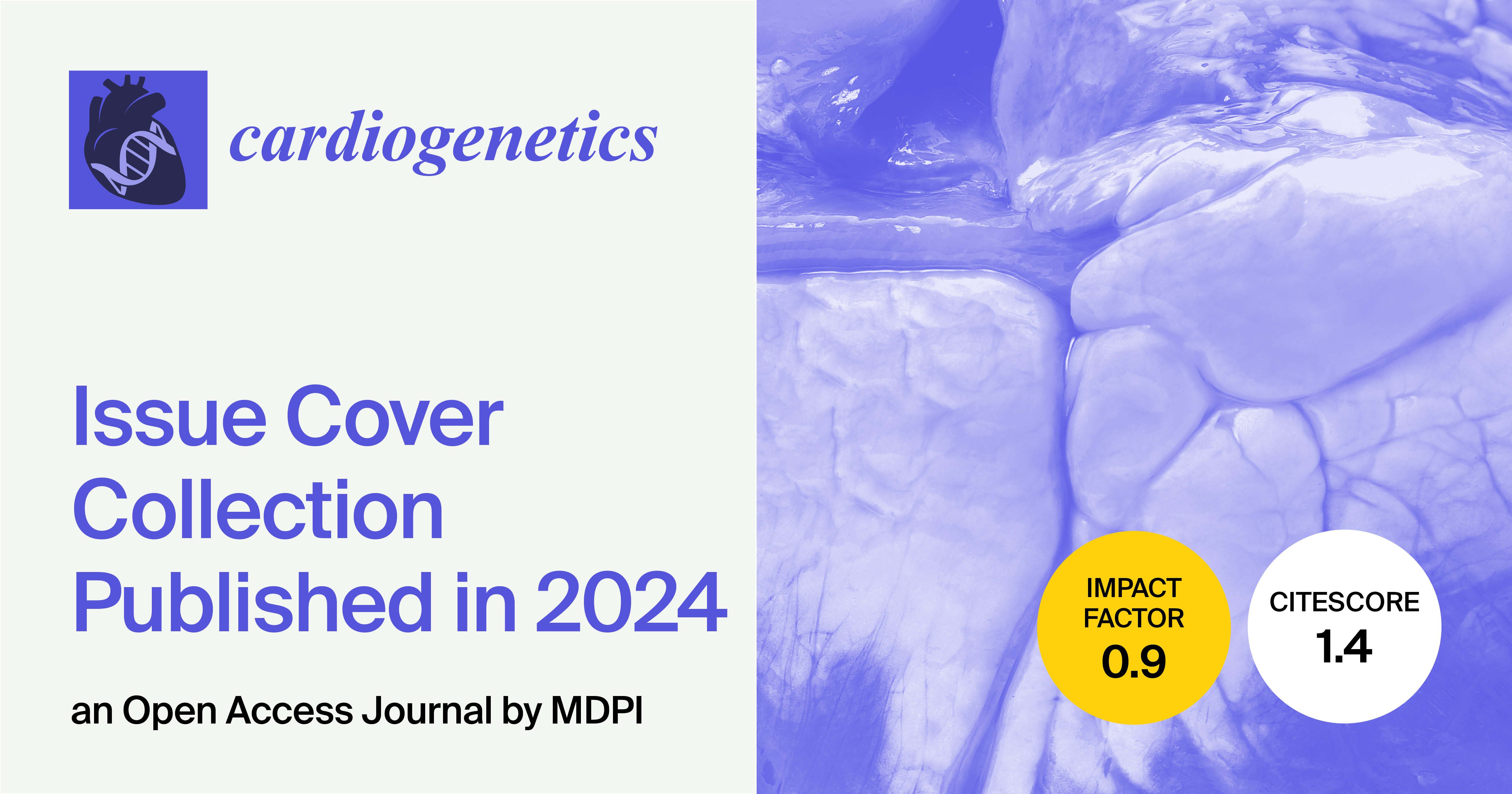Need Help?
3 July 2025
Cardiogenetics | Issue Cover Collection Published in 2024

We are delighted to present a list of Issue Cover Articles selected for display in volume 14 of Cardiogenetics (ISSN: 2035-8148). These articles cover a wide range of topics, including rare diseases, neuromuscular diseases, cardiovascular genetics in clinical practice, diagnostic methods and sequencing studies, etc. We hope you will find something of interest among these exceptional publications.

by Alberto Palladino, Luigia Passamano, Marianna Scutifero, Salvatore Morra, Esther Picillo, Andrea Antonio Papa, Gerardo Nigro and Luisa Politano
Cardiogenetics 2024, 14(1), 38-50; https://doi.org/10.3390/cardiogenetics14010003
Available online: https://www.mdpi.com/2035-8148/14/1/3
Background: Pompe disease is a rare, severe, autosomal recessive genetic disorder caused by GAA gene mutations, which cause α-1,4-glucosidase enzyme deficiency. There are two forms of Pompe disease based on the age of onset and the infantile and adult form (LOPD). Cardiac involvement, previously recognized only in infantile cases, is now also reported in adults. Cardiomyopathy remains an exceptional finding, while heart rhythm disorders appear to be more frequent. Methods: We retrospectively evaluated cardiac involvement in 12 patients with late-onset Pompe disease (LOPD) followed for an overall period of 143 years (mean 12.7 ± 7.7) using ECG, Holter ECG, and echocardiography.

2. “Exploring the Role of Genetics in Sarcoidosis and Its Impact on the Development of Cardiac Sarcoidosis”
by Sanjay Sivalokanathan
Cardiogenetics 2024, 14(2), 106-121; https://doi.org/10.3390/cardiogenetics14020009
Available online: https://www.mdpi.com/2035-8148/14/2/9
Sarcoidosis is a multifaceted and multisystemic inflammatory disorder, the etiology of which remains unknown. However, it has been suggested that an intricate interplay between genetic, environmental, and inflammatory factors may contribute to the development and progression of sarcoidosis. Although 30–50% of patients demonstrate extra-pulmonary manifestations, cardiac involvement is rare, affecting only 2–5% of cases. Diagnosis is often challenging, relying on the careful application of clinical judgment, histopathological evidence, and imaging biomarkers.

3. “Genetic Testing for Patients with Cardiomyopathies: The INDACO Study—Towards a Cardiogenetic Clinic”
by Matteo Bianco, Noemi Giordano, Valentina Gazzola, Carloalberto Biolè, Giulia Nangeroni, Maurizio Lazzero, Giulia Margherita Brach del Prever, Fiorenza Mioli, Giulia Gobello, Amir Hassan Mousavi et al.
Cardiogenetics 2024, 14(3), 122-131;
Available online: https://www.mdpi.com/2035-8148/14/3/10
The “Iter diagnostico dei pazienti con sospetto di cardiomiopatie geneticamente determinate: ottimizzare tempi e risorse” (INDACO) study is a monocenter prospective study evaluating the workup of patients with cardiomyopathies and suspected of having a genetic etiology in the regional context of Piedmont (northern Italy). The study describes the results derived from the implementation of a more functional workup process, pursuing time and resource optimization through the creation of a specific pathway for patients with cardiomyopathies inside a “cardiogenetic clinic” in which cardiologists and medical geneticists work together.

4. “Calcium Release Deficiency Syndrome (CRDS): Rethinking “Atypical” Catecholaminergic Polymorphic Ventricular Tachycardia”
by Alessandra P. Porretta, Etienne Pruvot and Zahurul A. Bhuiyan
Cardiogenetics 2024, 14(4), 211-220; https://doi.org/10.3390/cardiogenetics14040017
Available online: https://www.mdpi.com/2035-8148/14/4/17
Ryanodinopathies are a group of inherited arrhythmic syndromes associated with pathogenic variants of RYR2. This gene encodes the cardiac ryanodine receptor and is implicated in intracellular calcium homeostasis. Among ryanodinopathies, calcium release deficiency syndrome (CRDS) is a new emerging clinical entity caused by RYR2 loss-of-function variants, the molecular and clinical characterization of which is still in its infancy. The present review summarizes current evidence on CRDS. After careful revision of reported CRDS variants and their clinical phenotypes, we will analyze genetic and clinical red flags that should raise suspicion regarding CRDS, differentiating it from other ryanodinopathies. Lastly, we will discuss available therapies for the management of CRDS within daily clinical practice.

